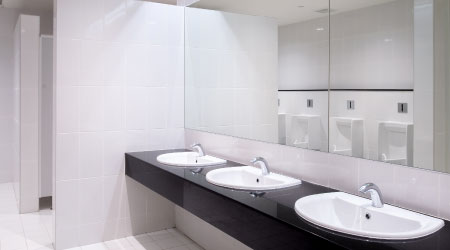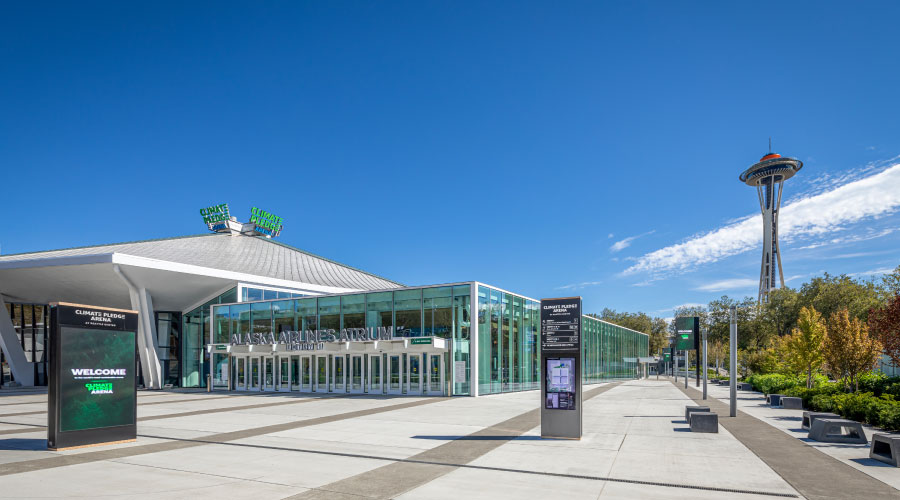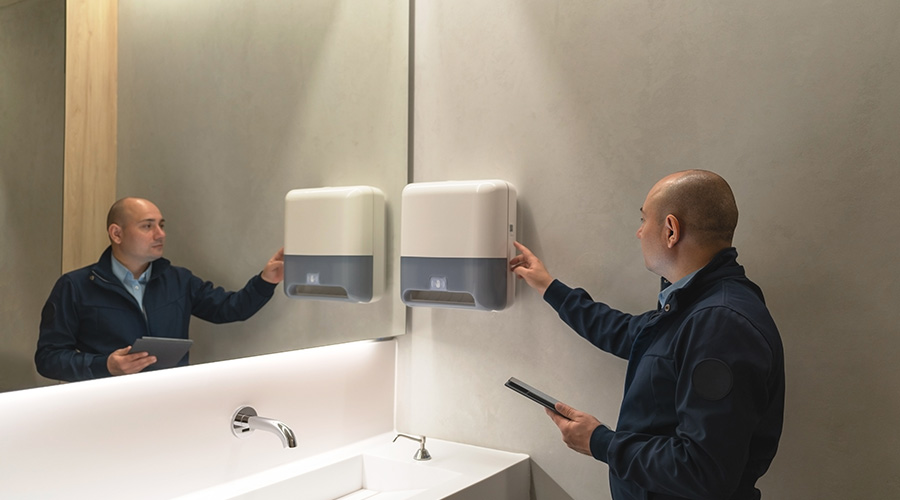Newer Touchless Controls Refine Sensor Performance
One of the most common complaints about the early-generation touchless controls was they were not sensitive enough. For example, when using early-generation touchless faucet controls, users had to place their hands in a very narrow zone for the control to work properly. This situation often left users frustrated with the controls because they had to move their hands forward and backward, and possibly side to side and up and down, just to find the exact spot that would activate the controls.
Newer-generation infrared controls have improved the units’ sensitivity to the point where this search to activate the flow of water is no longer necessary.
Manufacturers have developed new technology to make the units even better in other ways. Most touchless controls use infrared sensors. At least one manufacturer now offers a control based on the generation of an electric field in the area of the faucet that senses the user’s presence.
When an object, such as a user’s hands, enters the field, the field changes, and the faucet activates. As soon as the user removes the object, the field returns to its normal state, and the faucet deactivates. Since this system requires no infrared sensor window, it has no visible components to vandalize or that require periodic cleaning to function properly.
Another complaint about early-generation touchless controls was some were too sensitive. For example, early touchless water-closet controls tended to flush based on movement within the stall.
This problem was particularly wasteful in airport restrooms, where users often used the stalls to change clothes. It was not uncommon for water closets to flush four or five times during a single visit to change clothes. Newer controls have refined their sensor performance and now feature built-in delay functions to limit any accidental or unnecessary flushing.
Managers have always had the option of installing battery-powered or hard-wired controls. Battery-powered controls had the advantage of lower installation costs. Hard-wired controls had the advantage of lower maintenance requirements, since technicians did not have to test or periodically change batteries. But hard-wired controls also had the disadvantage of not being able to operate if the power failed.
In general, hard-wired controls were limited to new construction or extensive renovation projects, where it was easier and cheaper to get power to the controls. In most cases, retrofit projects used battery-powered controls.
For early-generation systems, the use of battery-powered controls presented a problem for managers, particularly those responsible for facilities with many battery-powered, touchless controls. Batteries in these early generation systems seldom lasted longer than one or two years. The cost of the batteries and the labor required to change them offset a good portion of the savings they produced.
Thanks to improvements in battery design and the development of touchless controls that require very low power, today’s battery-powered systems typically offer a three-five year battery life under normal operating conditions. Manufacturers also have designed the controls to make battery changing easier. Some flush controls even use a small turbine installed in the water line to generate their own electricity.
Related Topics:














